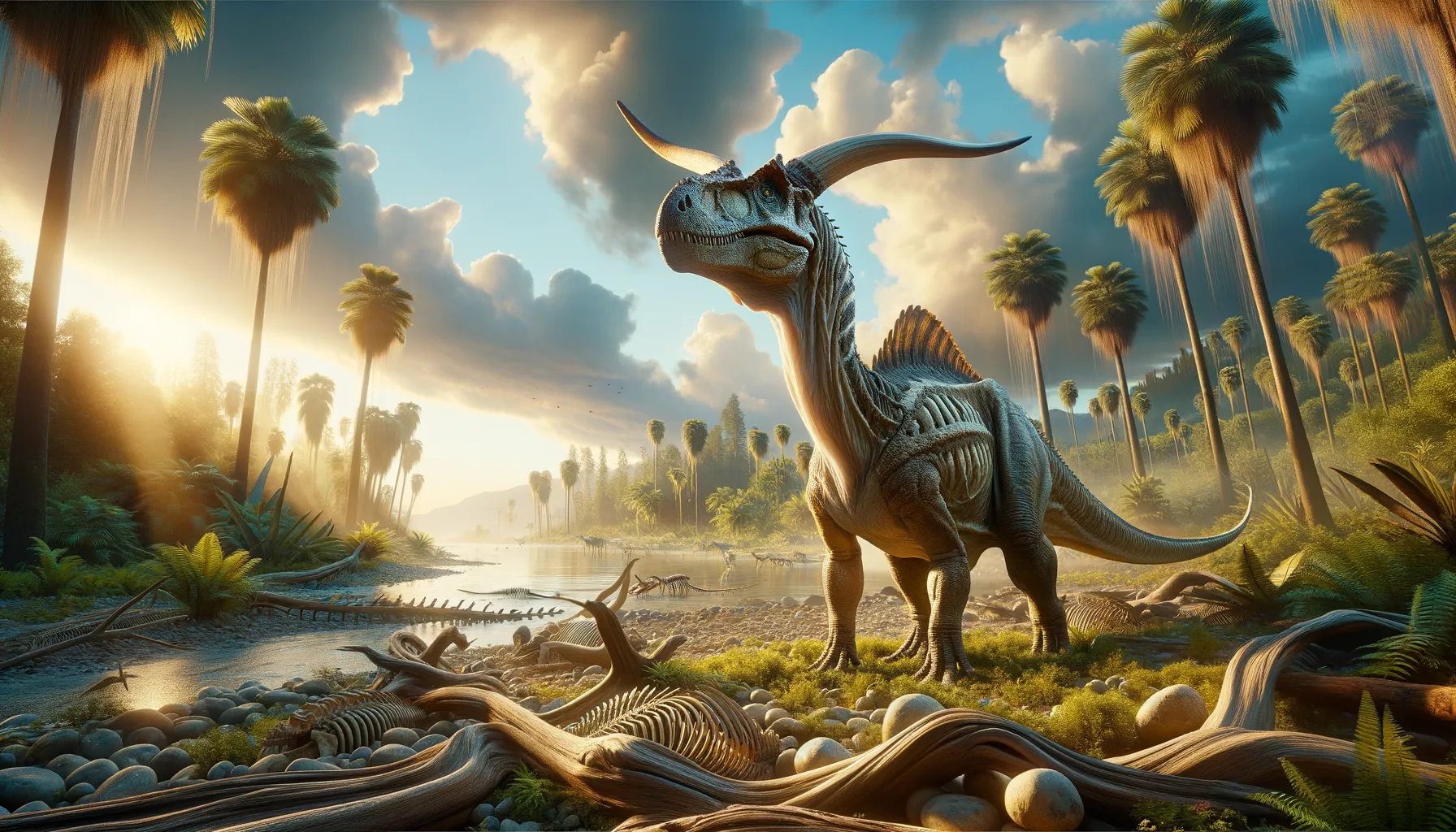
Chassternbergia
Majestic horned herbivore of yesteryears.
Period
Cretaceous
Length
Around 30 feet long.
Height
About 12 feet tall.
Weight
Approximately 2,200 pounds.
This dinosaur was a prominent herbivore during the Late Cretaceous period. Known for its bony frill and distinctive horns, it roamed the earth approximately 70 million years ago. Its fossilized remains have provided significant insights into its biology and ecology. Understanding its adaptations aids in reconstructing the ecosystems of ancient times.
Diet
Chassternbergia was primarily a plant-eater, feasting on native flora using its strong beak. Its diet included ferns, cycads, and flowering plants that thrived during the Cretaceous.
Hunting
Being an herbivore, it did not hunt other animals but likely foraged alone or in small groups. Its large horns and frill served as defense mechanisms rather than for hunting.
Environmental challenges
Chassternbergia faced fluctuating climatic conditions, requiring adaptability to changing food availability. Seasonal variation in plant life impacted its diet, pushing it to migrate. Competition for food with other herbivores was also a significant challenge, influencing its foraging strategies.
Speed
Moderate, suited for short bursts.
Lifespan
Estimated to be several decades.
First discovery
Described by Charles Sternberg in 1925.
Fun Facts
- Chassternbergia lived during the Late Cretaceous period, about 70 million years ago.
- This dinosaur roamed the land that is now known as North America.
- Chassternbergia was a herbivore, meaning it only ate plants.
- It is thought to have been about 20 feet long and weighed up to 3 tons.
- Chassternbergia had a strong, beak-like mouth that helped it munch on tough vegetation.
- The fossils of Chassternbergia were first discovered in places like Canada.
- Its name Chassternbergia honors the paleontologist Charles Mortram Sternberg.
Growth and Development
Chassternbergia experienced rapid growth during its early years, reaching near-adult size quickly. As it matured, the growth rate slowed but continued steadily. The bony frill and horns developed with age, possibly indicating social maturity.
Habitat
It inhabited lush plains and forested areas with abundant vegetation. These environments provided ample food and protection from predators. Wetlands and riverbanks were crucial for its survival, offering both nourishment and water sources.
Interaction with other species
Chassternbergia coexisted with various herbivorous and carnivorous dinosaurs. Its defensive anatomy helped deter predators, while herd behavior likely offered protection. Interactions with smaller herbivores were competitive, but symbiotic relationships with non-reptilian species might have existed.
Natural lifespan
Its natural lifespan potentially extended over several decades.
Reproduction
Chassternbergia reproduced by laying eggs in nests. Parental care was likely involved, with adults guarding nests to protect offspring from predators. Their reproductive strategy ensured a stable population through various environmental challenges.
Social behaviour
Evidence suggests Chassternbergia lived in herds, which provided safety in numbers. Social structures within herds were likely complex, influencing foraging and migratory patterns. Communication among herd members could have involved vocalizations and physical displays.
Fossil locations
Fossils have been predominantly found in North America, especially in the Great Plains. Significant discoveries in regions like Alberta have expanded knowledge of its distribution. These findings have enhanced understanding of Cretaceous biodiversity and environments.
